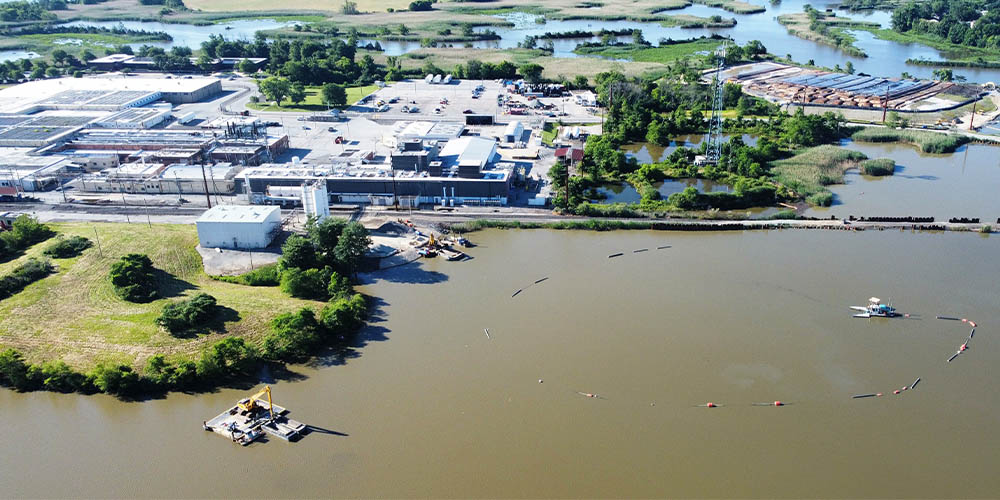
Pledger Creek Remediation
| Location | Mannington Township, NJ |
| Contract Value | $15,450,000 |
| Period of Performance | August 2021 – October 2022 |
| Role | Prime Contractor |
History & Location
The Pledger Creek site is in Mannington Township, Salem County, New Jersey. The scope of work included remediation in an area of the inactive on-site industrial landfill, dredging contaminated sediments from Northern Pledger Creek (NPC), dredging Central Pledger Creek (CPC), and dredging Southern Pledger Creek (SPC). The creek reaches which required sediment dredging are west, north, and adjacent to the facility. The primary contaminants of concern were PCBs and mercury.
Significant Project Features
- Hydraulic and mechanical dredging in three areas within Pledger Creek to remove 66,725 CY of sediment.
- Placement of a 5 acre sediment cap in three locations within Pledger Creek at the completion of dredging operations.
- Re-graded 21,740 CY of an inactive on-site landfill to prepare the dredged sediment dewatering area.
- Dewatered 66,725 CY of sediment via 70 Geotubes®.
- Designed, installed, and O&M of a 2,000-GPM WWTP; treated and discharged >164M gallons of filtrate.
- Installed 1,050 LF of sheet pile for shoreline stabilization and additional protective measures.
- Recipient of 2023 WEDA Safety Excellence Award.
Project Gallery
Rooted in Remedial Construction
Expanded into Environmental Dredging
Start a conversation about your upcoming project
(716) 284 - 0431
© 2021 Sevenson Environmental Services -
Privacy Policy | Sitemap
2749 Lockport Road | Niagara Falls, NY 14305
P: (716) 284 - 0431 | F: (716) 284 - 7645
